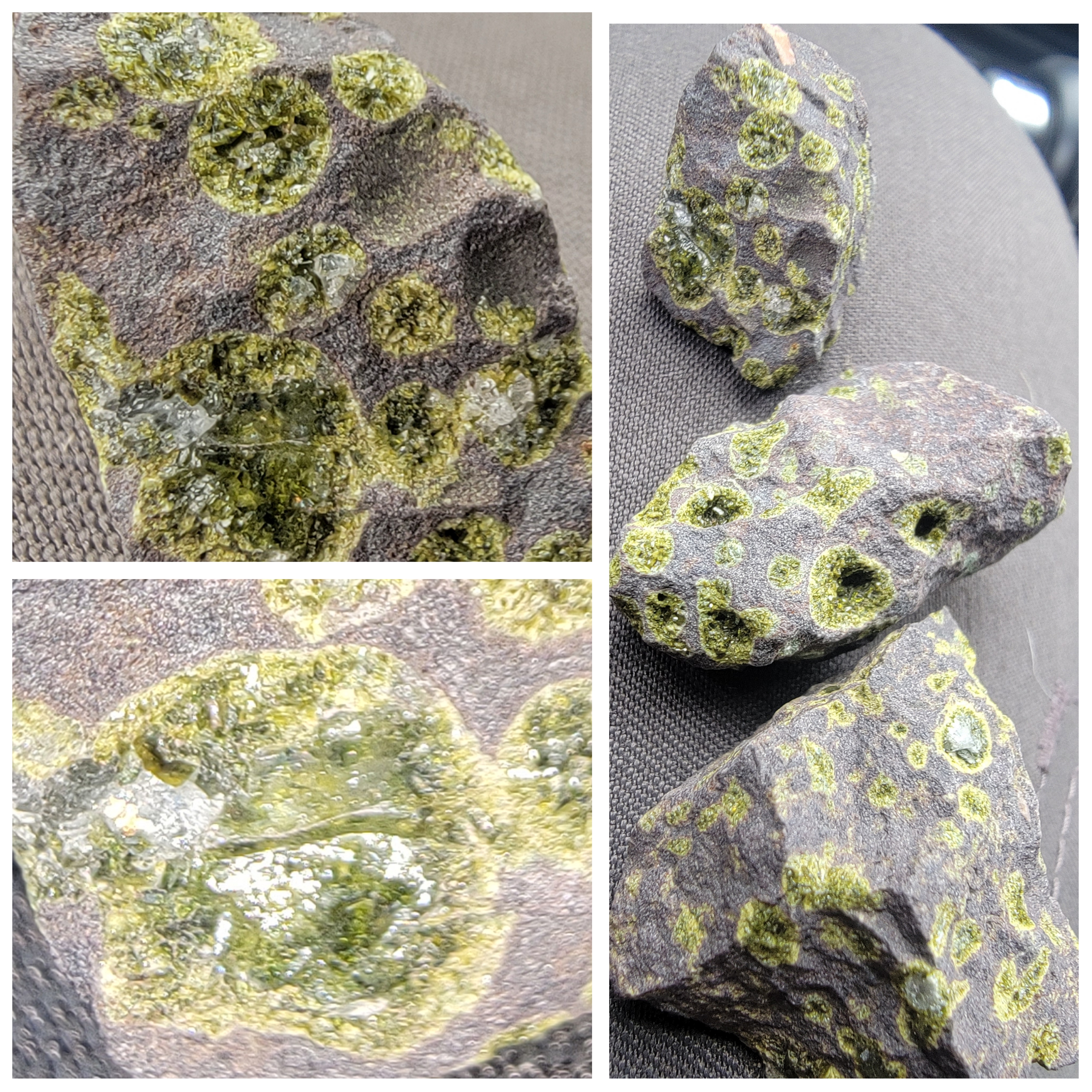‐-----------------------‐-update 11-11‐----------------------
After more research and some lucky talks I believe this to be epidote from tailings out of the Wolverine Mine, a few miles from where I found these pieces.
‐-----------------------‐-original post------------------------
Was rock hounding on the southern shore of Lake Superior. Found these green crystal deposits that formed like geodes, specimens are small, the largest is about the size of a corn kernel. A local said it could be chlorasolite but I don't think it matches based on color and clarity. Any thoughts would be appreciated!
